Hey there, Ben Sasso here! Learning new things is one of my favorite parts of what I do, and I want to be able to pass that on. If you're looking for some quick and basic natural lighting tips to play with on your next shoot, you're in the right place. Check out five easy tips! Hope you enjoy!
1. Focus on the Background
You know that whole thing about killer light being important? It goes for backgrounds too. Great light on your subject can be ruined by terrible light behind it. It took me a while to remember this one. I would see my images in post and slap myself in the brain every time I saw a potentially rad image ruined by terrible background light. It's something that always seemed to slip my mind while I was on set, but once I began to focus on it more, I saw my keeper rate going up quickly. Since I tend to shoot in soft light or backlight, what always tended to ruin it for me was harsh light on the landscape behind the subject. It was this gorgeous, luminous, soft light enveloping my couple or model, and then this bright, patchy, overwhelming light with the power of a million suns in the background. Don't forget the rest of the frame when you shoot; it's all important!
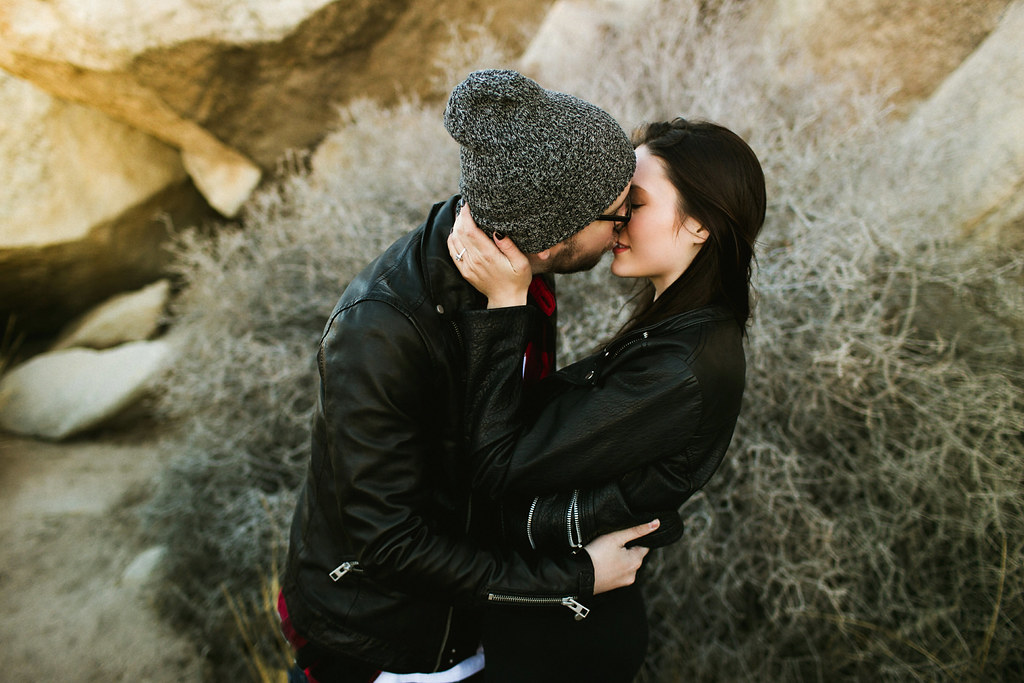
5D Mark III and 35mm f/1.4L II: This soft, flattering light that fell on Cory and Bethany would have been pretty close to worthless to me if it wasn't falling everywhere else. That doesn't mean that every frame with harsh light in the background is worthless, but if you aren't planning to include it in the image in a specific way, it can be pretty distracting. In this shot, I killed the harsh light by hiding it behind the massive boulder behind them.

5D Mark III and 35mm f/1.4L II: Cutting down on the harsh light in the background sometimes means waiting for the sun to drop lower before you take the shots that show a lot of it. I typically shoot images like this (where it shows a ton of distance) towards the end of a shoot so I don't have to worry about the hard light hitting anywhere off in the distance that I can't control. Once the sun drops to a certain point, the background goes from harsh to soft, and it opens up way more opportunities for shooting.
2. Natural Diffusers
Welcome to Earth, folks. It's that place where the sun sometimes burns down so hard that we can't even step outside without sunglasses. Let's be honest here: sure, it's a great light source, and it keeps us warm, but that sucker is powerful. That can mean awful and wonderful things for us as photographers (I'm sure you've all experienced the whole spectrum from love to hate for it). Luckily, there is a way to cut down its power a bit when we need to. Later in the day, the sun has has more air to cut through before it hits you — more air with dust and water particles that diffuse the light a bit. If you need it softened even more, why not look for some more diffusion to help you out? It might be easier than you think. Putting the sun behind tree branches is a ridiculously easy way to bring it down a notch while still keeping that gorgeous warm haze that it gives off.

5D Mark III and 35mm f/1.4L II: When I need to cut down the harsh light on the background of an image, I either wait for the sun to drop lower or shoot in front of a set that has a bit more shade. In some cases, when the sun is a bit higher, I can use trees to cut the harsh light a bit. When the sun comes through the leaves, it spreads it out and dims it down. Hello, gorgeous, soft backgrounds.
3. Find the Shade
One of the most common questions I'm asked when I'm speaking is: "What if we have to shoot portraits at noon?" I get it. The sun at noon is disgusting. At certain times of the day, I feel like the sun is putting in an effort to help me out and collaborate with me to create something awesome. At noon, I feel like it's thinking: "Ben sucks and I hate him. Deal with this, idiot." Typically, this question comes from wedding photographers since they aren't really the ones who are in charge of the schedule. My first response to this is always something along the lines of "offer to help with the schedule." Our clients hire us because they trust that we will do what we need to to make sure that we leave them with the best images we can. I always offer to help my clients with the wedding schedule so we are making sure that we have killer light when we need it. 90% of the time, they are gracious and accepting of my input, and 10% of the time they aren't able to move the schedule around for my sake. That's a huge amount of averted issues with light. It's better for both of you and doesn't take much effort on your part!
Of course, sometimes it's just not possible for them to move around the schedule, and you're stuck shooting portraits at noon when the light is burning down with the power of hellfire. I know it's rough. If this happens, you have two options. One is to slightly backlight your subject. Since you probably don't live on the equator, the sun will always be to one side of the sky or the other, so you can always put it slightly behind your subject. This option is always my last resort when I have to shoot midday. My go-to is option number two: finding the shade (trees, awnings, etc.) Anywhere you can find a bit of shade can save you from the heat and the blazing light. Shoot your best, and then try to steal them away for another 15 minutes at sunset as well!
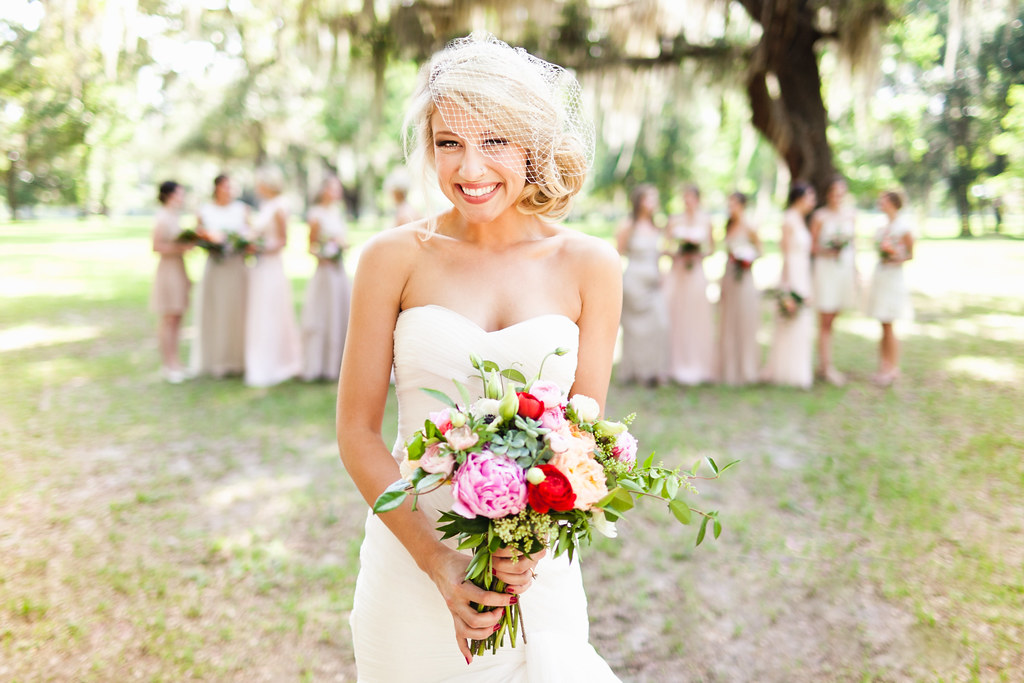
5D Mark III and 35mm f/1.4L II: I grew up playing in the Florida sun and loving it. Things took a dark turn when I started shooting in it. The portrait above was shot at noon in the middle of summer with the sun blazing down. With mossy oak trees all over the property, I put them in the shade and came out with some of my favorite bridal party portraits in a long time.
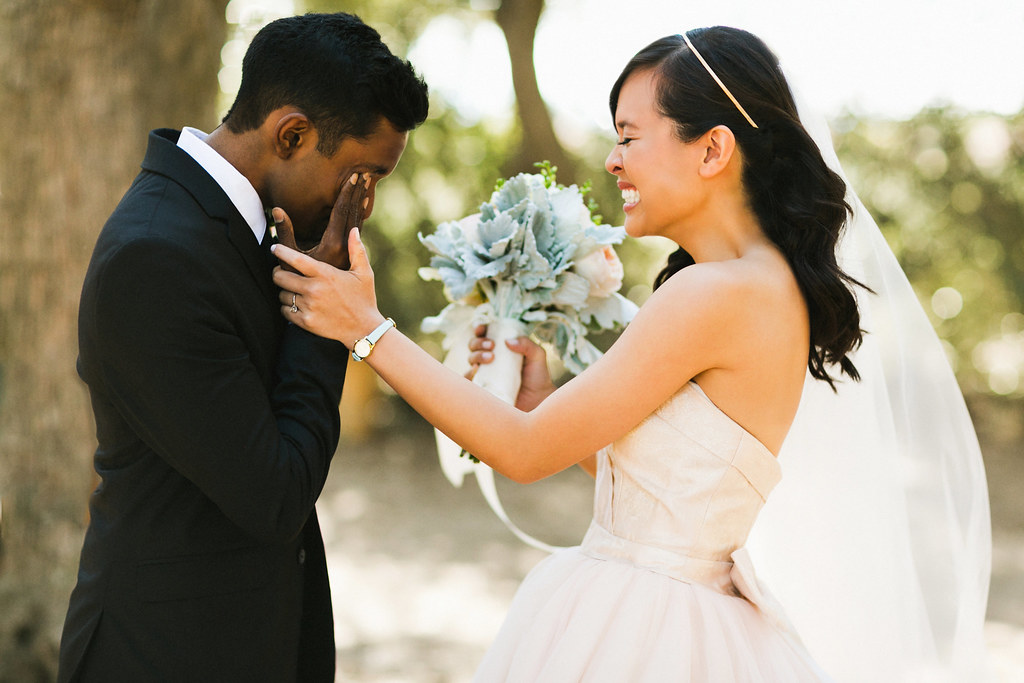
5D Mark III and 50mm f/1.2L:: First looks are notoriously hard to schedule. Unless you plan on having the wedding ceremony after sundown, you most likely won't be getting any of that gorgeous golden-hour light during the first look. I always arrive to weddings a bit early to scout, and during that time, I'm always on the hunt for tree cover and shade. If you aren't able to guess where the sun will be at certain times of the day (for example, if you are looking for shade for a first look that won't happen for another few hours), check out an app called Sun Seeker and thank me later.
4. Overcast Light
Shooting in overcast and foggy conditions can be a huge relief at times, but it also ends up being a bit trickier, because it can be harder to figure out which light is good and which is bad until you bring the shoot in to edit. For the way I shoot, it's important to either be shooting fully frontlit or fully backlit in conditions like this to keep the skin tones even and clean. With overcast light, if you have shadows on the skin, they can tend to look murky. Since the difference between frontlight, sidelight, and backlight is so subtle in light like this, an easy trick is to hold your hand out in front of you and squint at it until it turns into a blurred blob. From there, just spin around and you'll be able to see how the light falls on it a bit easier. Also, you won't look like a fool at all when you do that (probably not true). In overcast light, I typically front-light my subjects. I find that this gives me a bit more of a luminous look and prevents any of that unflattering muddiness I want to avoid.
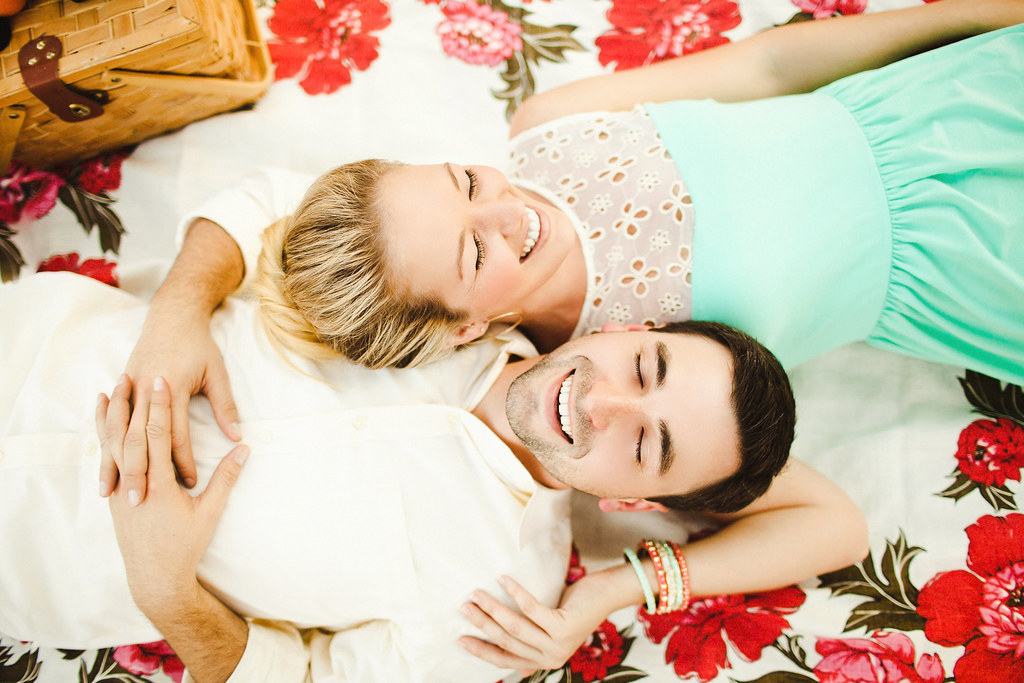
5D Mark III and 35mm f/1.4L II:: One of the joys of overcast light is that it is much more forgiving in any direction than hard light would be. During Katie and David's engagement session, we were hit with classic Florida rain clouds for a portion of the shoot, which gave me light soft enough to shoot from above without covering them with harsh sunlight. I've shot like this in the shade on sunny days as well, but harsh sun coming through a tree will leave a green tint on anything below it — not the best for skin tones!
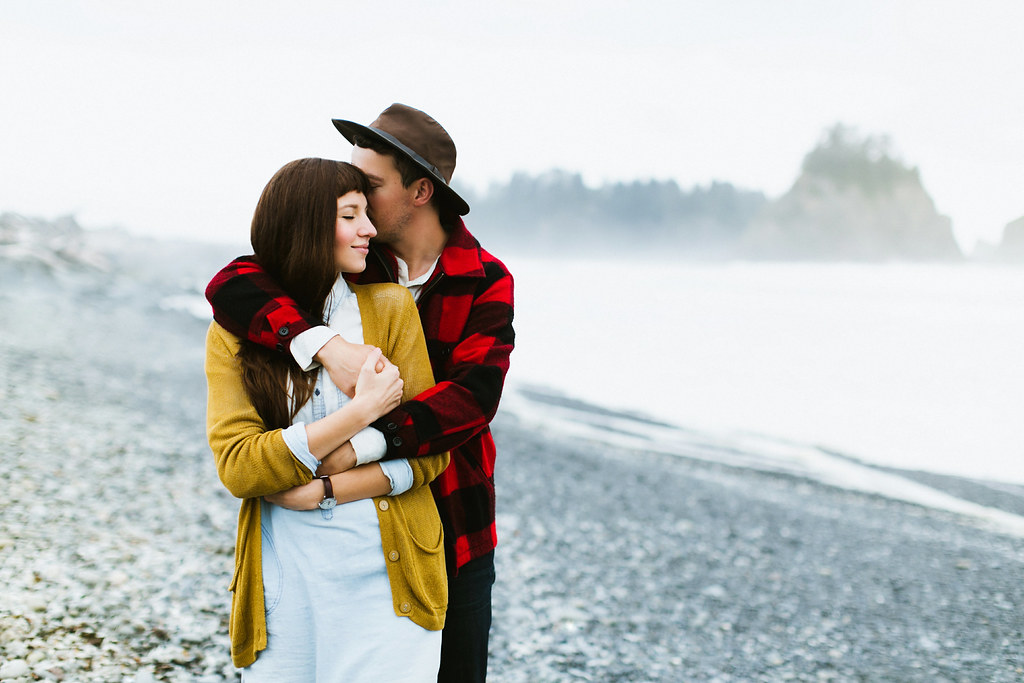
5D Mark III and 35mm f/1.4L II: During the Manchik's shoot at Rialto Beach in Washington, we got that typical Pacific Northwest overcast light, which meant I had to put a bit more thought into where the actual light was coming from. If you find yourself having trouble even with the blurred hand tip, this is another place that the Sun Seeker app can help you out. You can use it to see exactly where the sun is hiding behind the clouds.
5. Separation
One of my favorite things in a killer portrait is a separation between the subject and the background that draws your eyes right where they should be. Creating a difference between your subject and the rest of the image is what makes them really pop and take center stage. This might mean that the subject is bright and the background is dark (or vice versa), or there is a difference in contrast, color, focus, or anything else. Aside from the killer mood that it brings, this is actually one of the major reasons that I love shooting in fog! With your subject close to the camera and the fog in-between them and the background, everything in the frame except for them becomes muted and faded, giving your subject all of the pop. Win!
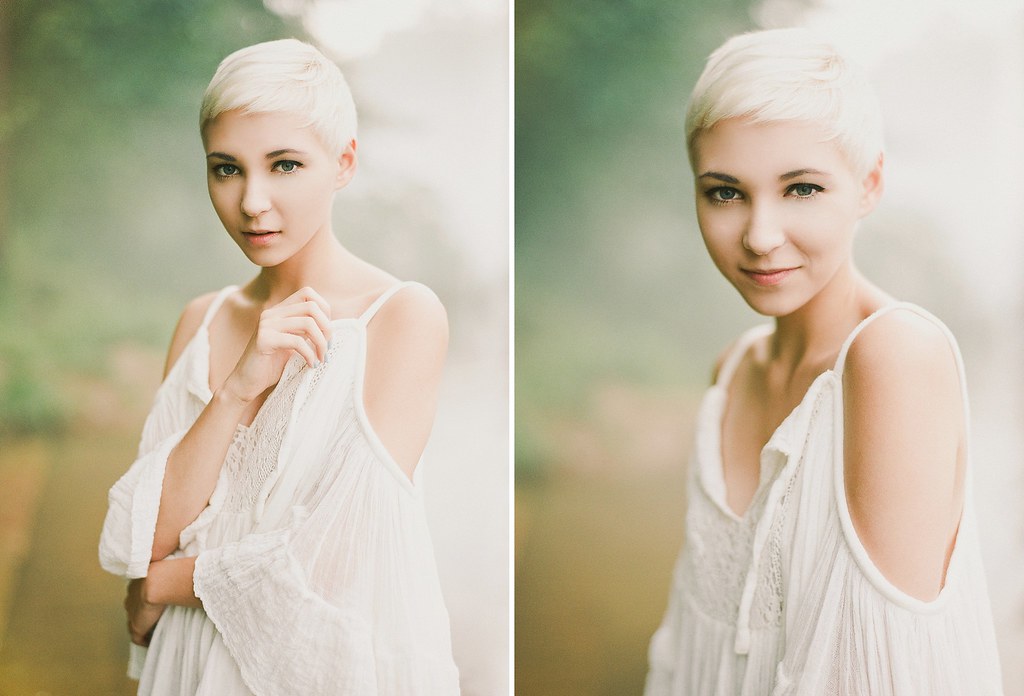
Contax 645, 80mm f/2, and Kodak Portra 400: Shooting in fog is my dream (well, one of them at least). It has muted tones, soft light, and that gorgeous separation that makes your subject pop out of the frame. Not bad for some wet air.
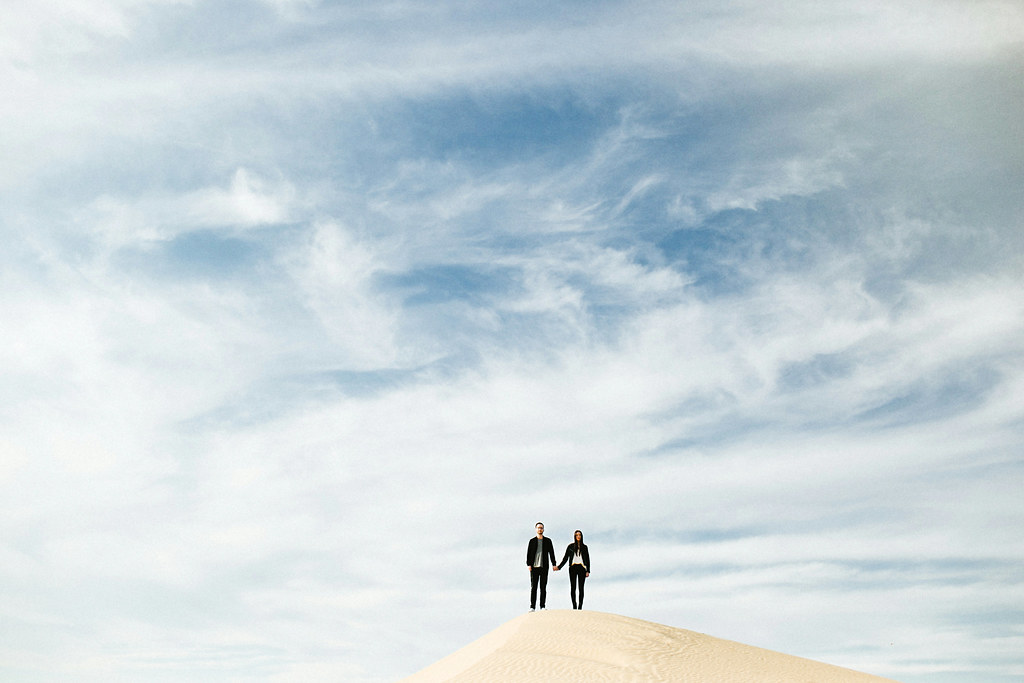
5D Mark III and 35mm f/1.4L II: The separation that makes them pop comes from the simple fact that they aren't a blue sky. This is the most stripped down example I have of that separation I'm talking about. All of the frame is "this," but they are "that."
I hope this was helpful for some of you! If you want to dig in more, check out my Free Lighting Class, sponsored by my friends at Rangefinder Magazine. If you're into it, feel free to pass it along; we're all in this together.

You know you've created you're own style when you can tell a "Ben Sasso" photo without seeing the name. Love your work bro! Always inspirational
Thanks so much!
Superbe article, merci
Glad you enjoyed it, Denis!
Great tips! And of course, love your work!
Thanks, Kuba!
[OFF TOPIC] I don't know why I keep hearing those certain photographers saying 35mm isn't a portrait lens, wow in this post itself proved that wrong! Great shots! I am loving the 35mm 1.4 (considering the tamron 35.1.8) more and more every time I see portrait photographers using it!
Thanks so much! While it's important to understand rules, I think rules are silly. The reason for that "rule" is that the 35 can cause slight distortion and can elongate certain aspects of the frame (AKA the subject). To fix this, you can click on the profile corrections in LR which will fix the distortion for you!
Thanks for the tip! Can't wait to rent then buy a 35mm 1.4 (or 1.8) lens some day!
I don't know how you edited the bridal party one, but the colors in that image are simply amazing.
Thanks so much! I actually have a few free Before/After blog posts on my site that dig into my editing slightly but if you want to dig in way more, here you go: http://bensasso.com/blog/education/editing-and-consistency/
Interesting I learned some new tips at shooting in natural light (alone, without assistants w/ modifiers), and I thought I learned just about all of natural light. I gotta try these new tips out! Thanks!
You're welcome!
Nice article and beautiful pics.
Thank you, Bharath!
This article was really interesting and not just the extreme entry level kind of stuff that pours down on you every day
Glad that you enjoyed it.
These are actually some of the best natural light shots I've seen, especially when not using artificial light modifiers. #2 could be difficult though. Standing your subject underneath a tree when the light is intense can sometimes make mottled light on your subject, so you noting to do that later in the day is a good tip. Great work Ben. Your photography is amazing for a whole host of reasons. I think it's your prep work that really makes your photography stand out. Thanks for the great article!
Thanks so much, I really appreciate that!
At the risk of being a touch off topic, what was the location of the shots under the first point? Look almost like desert terrain but the palm trees has me confused.
That was at Joshua Tree National Park.